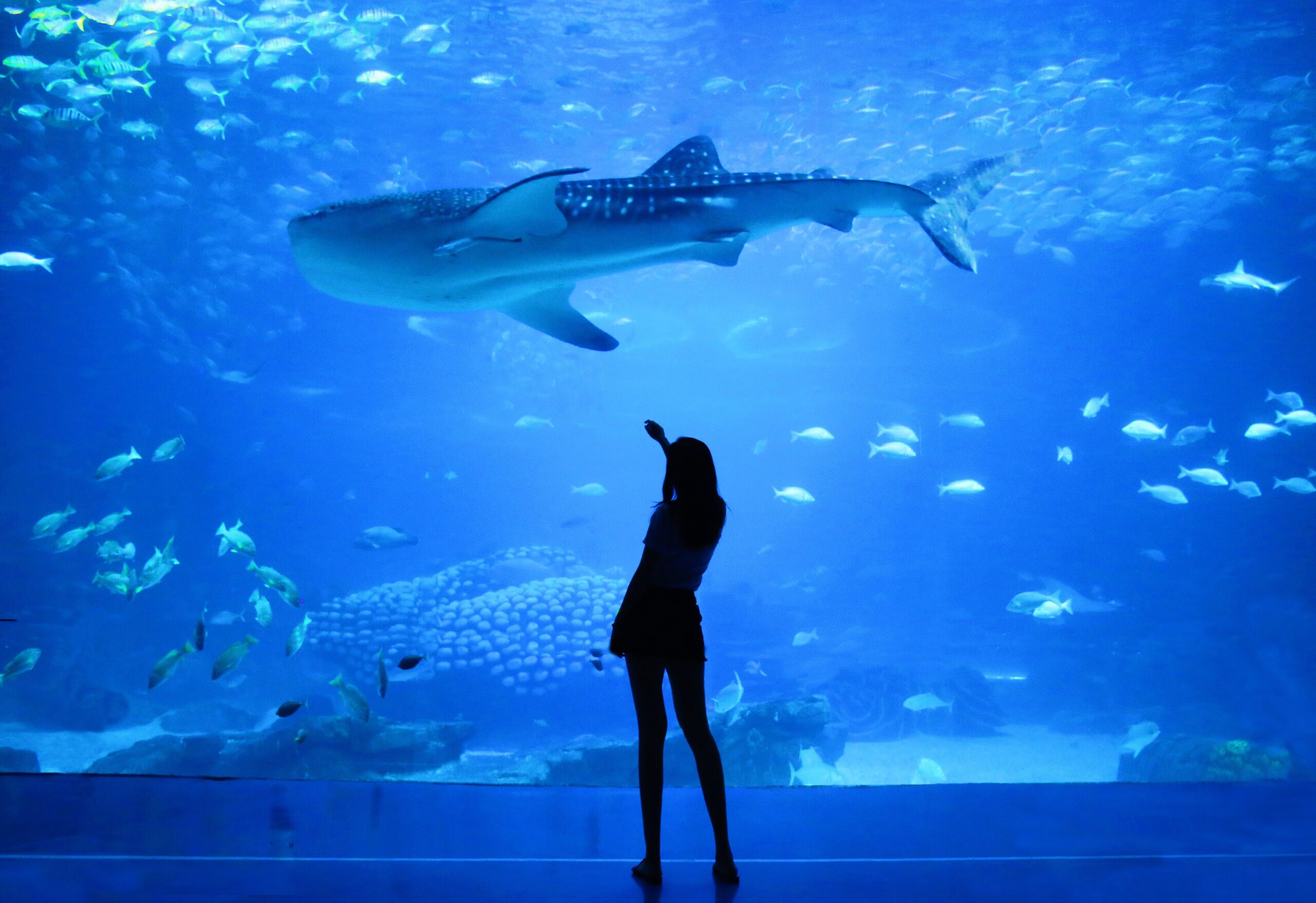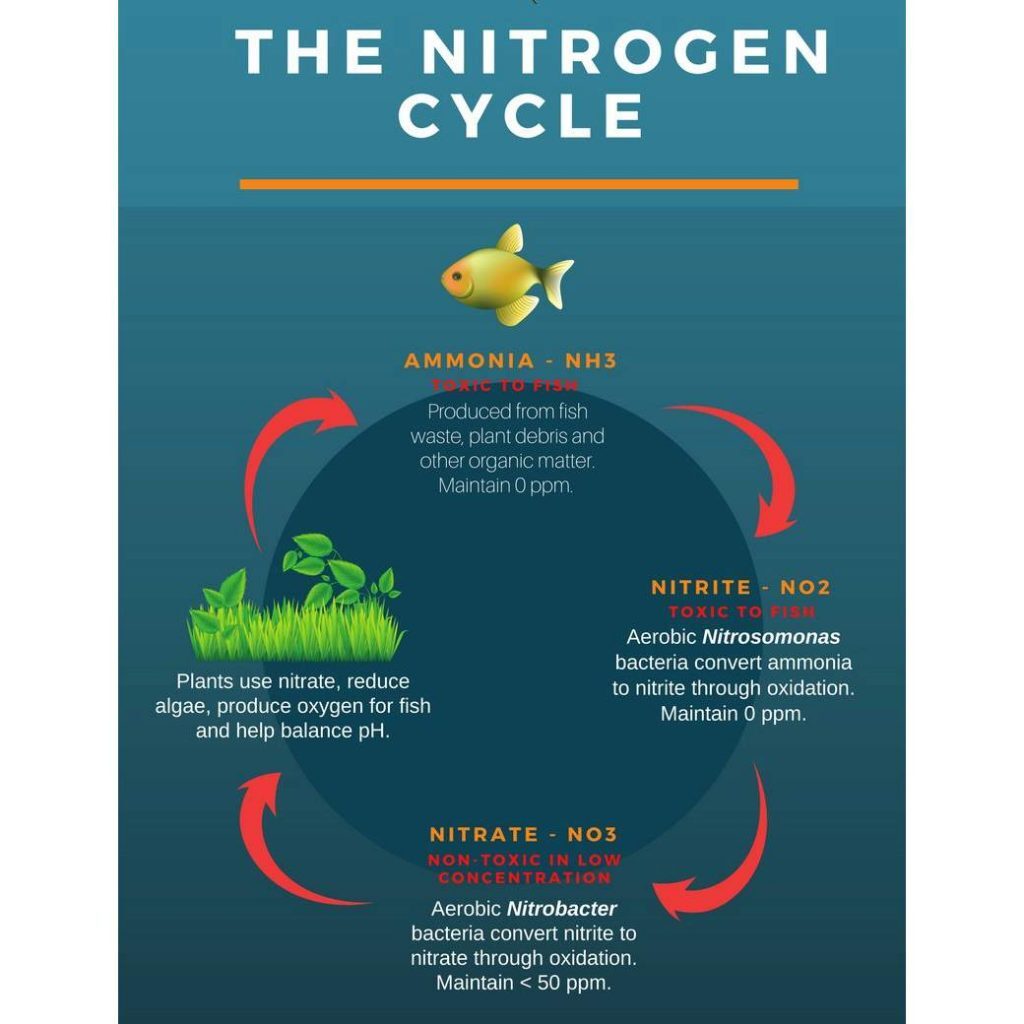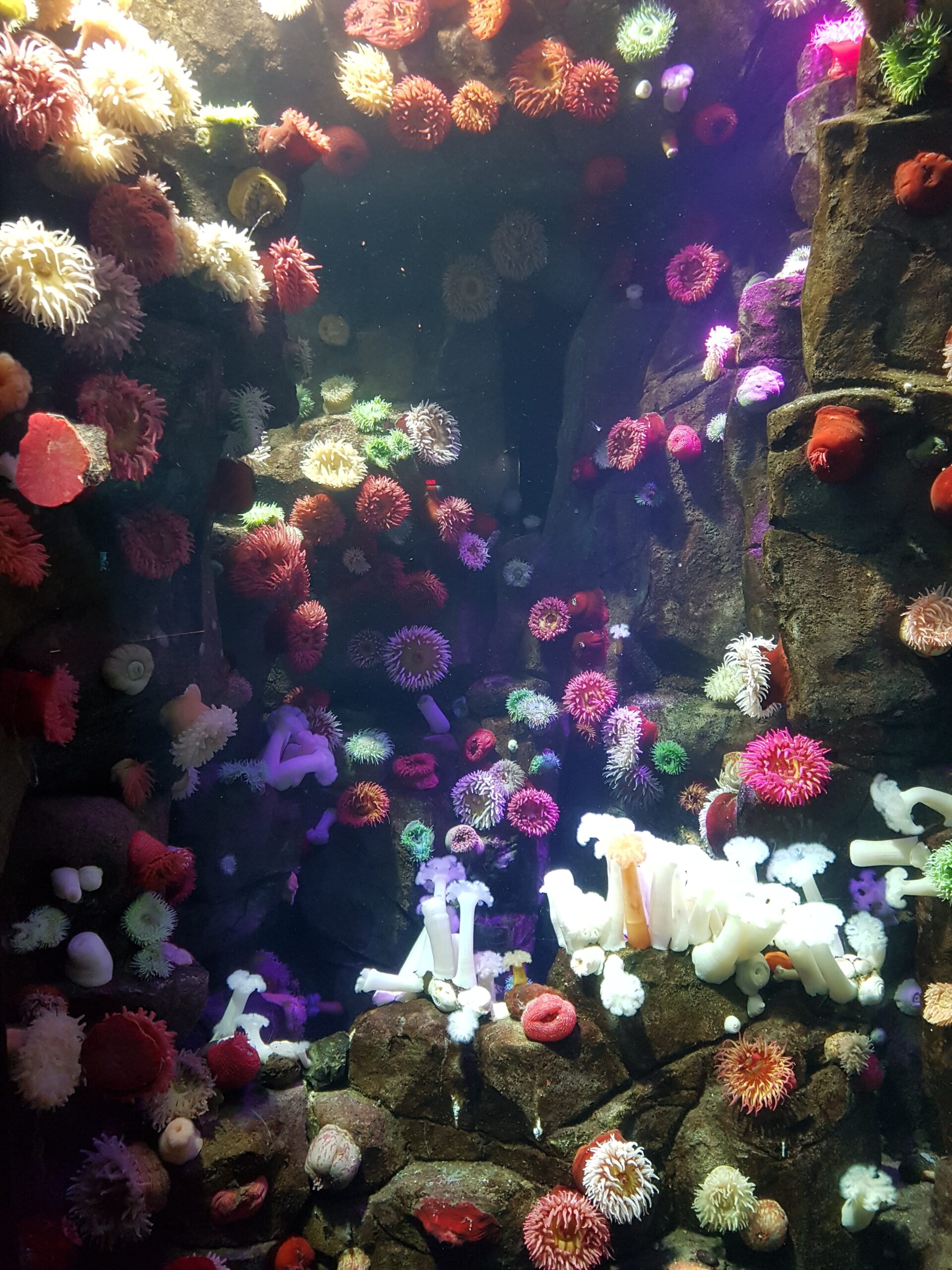- October 28, 2021
- cycling your tank, nitrogen cycle
- The Nitrogen Cycle
Have you ever wondered what the deal is with water changes on your aquarium? You have a filter and it was probably the best one on the market when it was installed, so dumping out water and adding more seems redundant, right?
Or, you have a brand-new aquarium and you’ve added your favorite kind of fish right after you set up the tank. But when you check on them the next day, they’re all dead. What gives?
Both questions have the same answer: The Nitrogen Cycle of the Aquarium.

The Nitrogen Cycle
Let’s break this down by first explaining what the Nitrogen Cycle is. Take a look at the picture below.

When fish eat and breathe any waste that comes from the fish is converted to Ammonia. And just like the concentrated cleaning chemical, high amounts of Ammonia in your aquarium is bad news. Your fish can experience Ammonia burn on their fins and gills and it will quickly decrease their health and longevity.
In an established tank, good bacteria called Nitrosomonas will break down the Ammonia in the water and convert it to Nitrite. While it’s no longer chemically Ammonia, Nitrite is still harmful in any quantity.
Nitrite is then broken down by more good bacteria called Nitrobacter, and converts Nitrite to Nitrate. Nitrate is much less harmful (in low amounts) in your aquarium. When you test your aquarium water a healthy reading for your tank should be Ammonia: 0ppm, Nitrite: 0ppm, Nitrates: <50ppm*.
*ppm stands for Parts Per Million.



